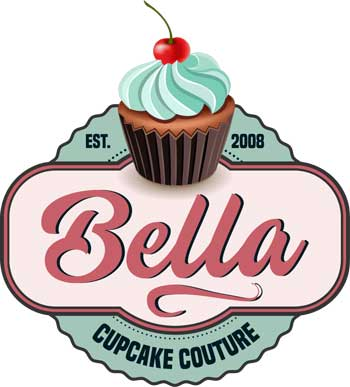
Silicone baking pans, nonstick sheet pan liners, and loaf pans are perfect baking tools. After you bake your specialty pastry, you need to wash them. They do seem to be easy to clean, but once you streak your finger in your pan, there appears to be an oily residue left. That sticky substance creates an awful smell in your pan, which I know you want to get rid of. Being a professional baker, I will discuss why does bakeware smell and give you some tips on how to remove odor from silicone bakeware.
How to Remove Odor from Silicone Bakeware
To clean your silicone bakeware, you only need two things: hot water and grease-cutting dish soap. It is one of the cases in which the all-natural products might not cut it. You’re going to need something that tackles the sticky residue.
Wash the silicone pan thoroughly with soap and hot water to ensure that it is not coated with the traces of food or oils that might be cooked on in the oven.
Directions to Remove Odor from Silicone Bakeware
- You need to preheat the oven to 250 degrees Fahrenheit temperature.
- Use a mild dish cleaner and a fluffy sponge or cloth to scrub the silicone tool.
- Position your silicone bakeware on a sheet of cookies and place it in the oven to remove the odors.
- Place the silicone bakeware for 20 minutes.
- Give your silicone container a sniff check when the timer goes off. Pull your silicone bakeware from the oven and smell it. Make sure you don’t burn your nose. If there is any residual smell, return it to the oven for another 10 minutes. Repeat the process until no odors are remaining. It will not last for more than an hour.
- Let it cool down and send it to your sink and wash.
Tips to Remove Silicone Bakeware Odor
Here are some useful tips on how to remove odor from silicone bakeware:
Use Baking Soda
There’s only one way to clean your silicone after you have followed the cleaning method above: use baking soda. What can’t be accomplished with baking soda when it comes to cleaning? Create a dense paste of baking soda with water and add it to the messy areas. Leave the baking soda in the bakeware before rinsing it. You can wipe it clean with more hot water and dish cleaner.
Cover the plate with a mixture of one tablespoon of white vinegar to two tablespoons of baking soda. Leave the compounds in the pan overnight. Rinse with water to extract the mixture.
Never Use Abrasives
The only thing you should not use is abrasives. Don’t feel tempted to use a scrubby sponge to handle it. Not only does this not help you clean the pan, but in the end, you can also harm it. You will allow the silicone parts to flake off, and it can ruin the pan’s nonstick property.
Nonstick Property of Silicone Bakeware
Silicone is a composite rubber made of silicon, oxygen, and other components. It has a quality comparable to rubber, which is nonstick and heatproof. If your silicone bakeware warms and contains oils and odors, compounds develop a terrible smell.
Make sure anything you clean is 100% silicone, or otherwise heatproof. While silicone can stack up under elevated temperatures, keeping most rubbers or materials inside the oven is not a good idea.
Some of the silicone cookware is oven-safe up to 500 degrees Fahrenheit or more. If your silicone bakeware is labeled with a higher setting, then go forth and choose a higher heat degrees.
Why Does Silicone Bakeware Smell?
Lingering fumes aren’t a concern exclusive to silicone ice cube trays; all sorts of silicone kitchenware may be affected. If you choose to produce, say, rice pudding, the silicone gasket within the fabric of any pressure cooker can absorb pungent odors such as garlic, and then pass them to the next item you prepare. Silicone spatulas may become prone to odors; that’s why it’s essential to know how to remove odor from silicone bakeware.
Some off fumes are composed of chemicals that stick to the kitchenware with silicone, just like water, these chemicals evaporate at high temperatures. So when you bake silicone, the scents are burning right off.
Silicone is perhaps the most suitable substance (apart from glass) for use with children who drink. Sometimes you may find a huge smell, and these sometimes occurring odors are the result of clinging food oils and washing soaps. It is not the silicone material as a whole. That is because the solution does not have additives that keep the silicone rigid.
Is Silicone Bakeware Safe?
Silicone is a food-safe material approved by the FDA. The FDA allows a whole lot of stuff, but I don’t trust for human consumption, including hydrogenated oils. Almost all the references say that silicone is inert, it doesn’t interfere with food or liquids, and it doesn’t emit chemical fumes.
Just because there are not many health experts and silicone tests that prove it is most definitely not healthy does not imply it is healthy.
The safety bottom line is:
- Check your manufacturing company for other materials that might contaminate your silicone bakeware.
- Treat it well– do not pierce or cut on those baking mats!
If you choose to be traditional, avoid the silicone and opt with cooking and baking with glass, cast iron, or stainless steel. You can use unbleached parchment paper if you need durability. It pays greatly that your kitchenware will last if you know how to remove odor from silicone bakeware.
Conclusion
You can skip using cooking sprays to prevent a greasy buildup in the future. You don’t need them, because the pan is already nonstick, and these sprays will only make a sticky mess. It’s essential to keep your pastries healthy and delicious. That’s why it’s important to know how to remove odor from silicone bakeware. Find out more about bakewares.
